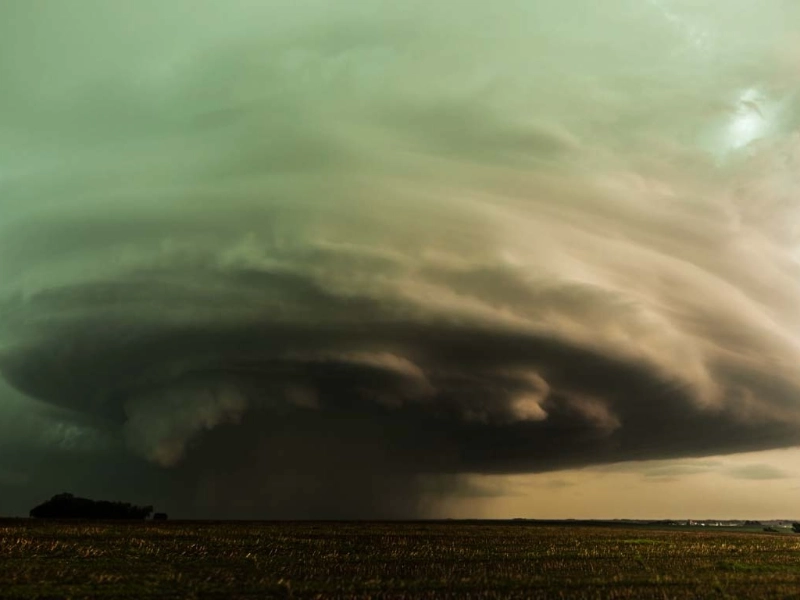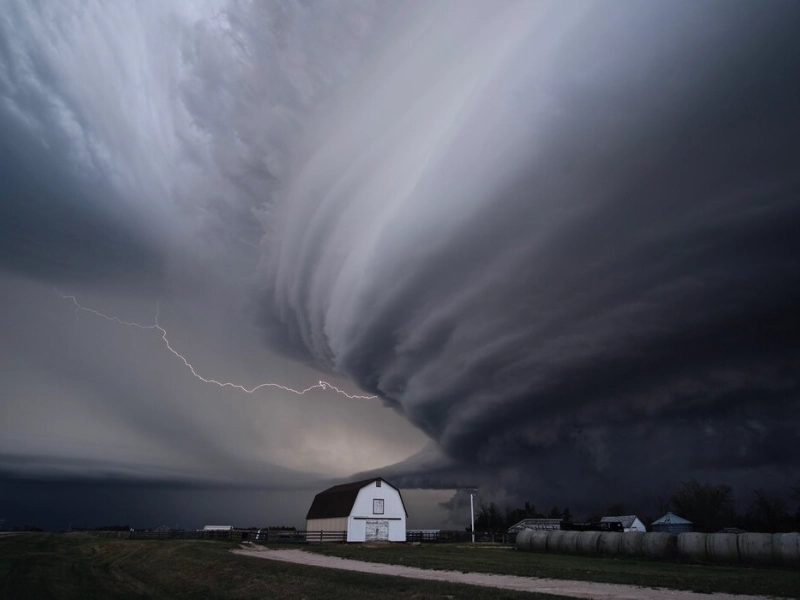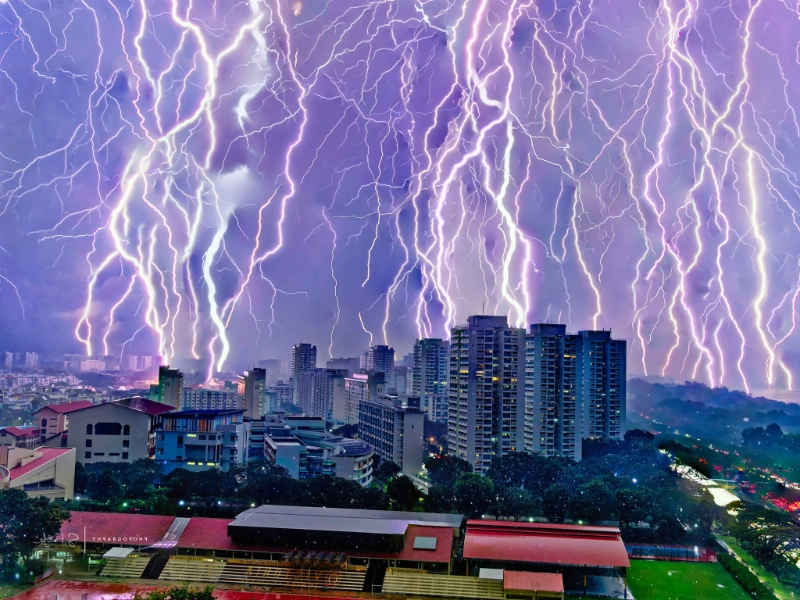Supercell Thunderstorms: Nature's Ultimate Storm Machine
Among the most amazing and strong natural weather events are supercell thunderstorms. Both researchers and storm chasers will find great fascination in these large storm systems distinguished by their revolving updrafts and long-lasting strength. Uncovering the mysteries of nature's ultimate storm machine, this article explores the amazing realm of supercells, including their creation, structure, and effects on our environment and society.
1. The Anatomy of a Supercell Thunderstorm

Rising behemoths with amazing heights of up to 65,000 feet (20 km) into the atmosphere, supercell thunderstorms are the giants of the storm universe. Often spanning hours and covering vast areas across the terrain, these remarkable weather systems are distinguished by their distinct structure and long-lasting characteriszation. A supercell is fundamentally driven by its mesocyclone, a revolving updraft that distinguishes it from typical thunderstorms and provides its amazing force and lifetime.
With each element vital in the production and behaviour of the storm, a supercell's complicated and intriguing anatomy is Fundamentally, the storm draws warm, moist air into it to drive its intensity and expansion. The unique anvil-shaped cloud top created when this air rises cools and condenses, spreading miles of shadow over the ground below. Strong updrafts and downdrafts inside the storm create a dynamic environment where hail, torrential rain, and even tornadoes can develop, hence supercells are among the most deadly and erratic storms known on Earth.
A supercell's wall cloud—a lowering of the storm's base sometimes preceding tornado formation—is among its most remarkable characteristics. Often the object of great research by both meteorologists and storm chasers, this menacing framework provides evidence of the amazing forces at work inside the storm. Forecasters and scientists must keep a close eye on the wall cloud since it provides a visual clue of the storm's rotation and possibility for severe weather. Surrounding the wall cloud, rain-free sections known as flanking lines offer a clear glimpse of the storm's structure, why supercells are a preferred topic for photographers trying to capture nature's wrath in all its terrible glory and for weather lovers.
Unlike other kind of thunderstorms, the supercell is driven by the spinning updraft, sometimes known as mesocyclone. Strong air currents of over 100 miles per hour (160 kilometres per hour) allow severe weather to flourish in their environment. Supercells' unique hook echo look on radar comes from the mesocyclone's spin; this is a telltale indicator used by meteorologists to identify these threatening storms and send warnings to possibly impacted populations. Supercells are a constant menace to any place in their path since this special ability lets them last hours on end.
Large hail, strong lightning, and even tornadoes are produced in the mesocyclone by a sophisticated interaction of air currents and temperature gradients. Strong rotation can enable precipitation to be cycled through the updraft several times, resulting in the development of really huge hailstones. Supercells are able to generate some of the biggest hail on record thanks in part to this recycling mechanism; stones often reach softball or even greater size. Supercells' great reputation also stems from their strong electrical activity; lightning strikes at a far higher frequency than in normal thunderstorms, producing an amazing but deadly light display for ground-based onlookers.
Stay Updated
Actionable growth insights, once a week. No fluff, no spam—unsubscribe anytime.
You May Like

Exotic Delights: 12 Perfect Tropical Fruits for Fruit Salads
08/10/2025

Experience the Thrill of the World's Fastest 10 Cars
07/10/2025

The Surprising Benefits of Sleeping Next to a Lemon
08/13/2025

These Animals Were Born With Very Unique Markings That Set Them Apart
08/05/2025

Rare Historical Photos That Reveal the Unknown Past
06/09/2025

Hilarious Award-Winning Wildlife Photos Proving Animals Have a Sense of Humor
08/07/2025

The Best Shot Of A Wild Animal You've Never Seen Before
07/14/2025

What Will Happen to Your Body If You Start Eating 3 Dates Every Day for a Week
06/29/2025

25 Hilarious Photos that Show the Funny Side of Women's Tennis
09/02/2025

19 Reddit Users Shared Their Best Secrets to Make Life Easier at Home
07/07/2025

Hair Mistakes That Make Women Look Much Older Than They Are
08/13/2025

Wardrobe Woes: Hilarious Celebrity Outfit Blunders You Can't Unsee
07/03/2025

Supercell Thunderstorms: Nature's Ultimate Storm Machine
08/15/2025

14 Unique Cat Breeds That You Don’t See Every Day
09/01/2025

The Strangest Beauty Pageants Through History
08/19/2025

DIY Disasters: When Repairs Go Horribly Wrong
07/26/2025

Nature's Perfect Timing: 15 Mind-Blowing Animal Photos You Can't Miss
07/06/2025

20 Luxurious Things From Dubai That Made Us Gasp
07/17/2025

10 Incredible Cities That Have Changed Beyond Recognition
09/02/2025

21 Hotels That Can Make Anyone Want to Book the Next Flight
07/06/2025

16 World-Famous Lightning Landmarks: A Must-Visit Pilgrimage
07/19/2025

Owners Were Shocked! The Amazing Changes After Pet Grooming
08/07/2025

Watermelon Diet: A Delicious Choice for Summer Weight Loss
08/29/2025

9 Amazing Facts About The Blue Lagoon - #6 Will Shock Even Icelanders!
07/21/2025
Comments
StellarTactician · 08/19/2025
Quietly unlocks strategic bandwidth.
MosaicRanger · 06/14/2025
Plays well with constraint injection.